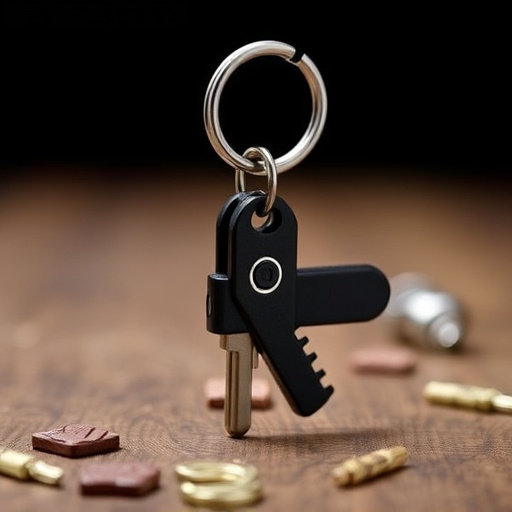Selecting a proper keychain for concealed defense involves balancing functionality and comfort. Look for robust construction, discreet attachment points, and a striking form technique for quick deployment. Ergonomic designs ensure everyday carry comfort, while understanding personal needs and environment guides feature choices like stun capabilities or multi-tool utilities. Mastering the "striking form" technique enhances confidence and effectiveness in dangerous situations. Distinguish between tactical and everyday carry keychains, with EDC options prioritizing convenience and discreetness for common scenarios.
“Enhance your personal safety with a concealed defense keychain—a versatile tool for everyday carry. This comprehensive guide explores how to choose the right self-defense keychain, master effective striking techniques, and seamlessly integrate it into your daily routine. From understanding your environment to practicing precise movements (including our focus on the Proper Keychain Striking Form Technique), these tips ensure you’re prepared. Discover the best keychains for your needs, learn optimal carry methods, and unlock a new level of security.”
- Choosing the Right Keychain for Concealed Defense
- – Understanding your needs and environment
- – Types of keychains for self-defense: tactical vs everyday
Choosing the Right Keychain for Concealed Defense
When selecting a keychain for concealed defense, it’s crucial to consider both functionality and comfort. The proper keychain should offer a secure attachment point for your self-defense tool while being discreet enough to carry everyday. Look for keychains with robust, high-quality construction that can withstand regular use without compromising integrity.
The striking form technique is also essential. Choose a design that allows for quick and easy deployment, ensuring you can access your defense tool in an emergency situation. Ergonomic features and a well-balanced weight distribution will make it more comfortable to carry, enhancing your overall everyday carry experience.
– Understanding your needs and environment
When considering a concealed defense keychain for everyday carry, understanding your needs and environment is paramount. Assess your daily routine, whether it’s commuting to work or running errands, to identify potential threats and scenarios where quick self-defense might be necessary. This involves evaluating the level of danger in your area, the types of people you frequently encounter, and the tasks you perform. For instance, if you live in a high-crime neighborhood, a keychain with a strong stun feature could offer added protection. Conversely, if you’re an outdoor enthusiast, a multi-tool design providing various utilities might be more suitable.
The concept of “striking form” and “proper keychain technique” plays a crucial role in effectively utilizing your defense tool. Striking form refers to the proper posture and body mechanics needed to deliver powerful strikes or kicks when threatened. Practicing this form ensures you can use your keychain not just as a deterrent but as a genuine self-defense mechanism. Proper keychain technique involves learning how to quickly deploy the device while maintaining balance and control, enabling you to react swiftly and confidently in potentially dangerous situations.
– Types of keychains for self-defense: tactical vs everyday
When considering a keychain for self-defense, it’s crucial to differentiate between tactical and everyday options. Tactical keychains are designed with specific self-defense applications in mind, featuring features like sharp edges, reinforced materials, and customizable attachments. These tools are meant for more intense scenarios where quick access and robust performance are paramount. On the other hand, everyday carry (EDC) keychains focus on convenience and discreetness, offering subtle yet effective defenses for common situations.
For those seeking to master the art of self-defense with a keychain, understanding the proper striking form is essential. This involves learning techniques that allow you to utilize the keychain’s shape and weight effectively during a confrontation. Practicing various grip positions and swing motions can help develop muscle memory, ensuring that in an actual emergency, your actions are instinctive and precise.
When selecting a concealed defense keychain, consider your specific needs and environment. Tactical keychains offer advanced features for those seeking enhanced self-defense capabilities, while everyday carry options provide discreet protection for general use. Mastering the proper keychain striking form and technique is essential, ensuring you’re prepared and confident in any situation. Choose wisely, practice regularly, and always prioritize safety when carrying a concealed defense tool.
